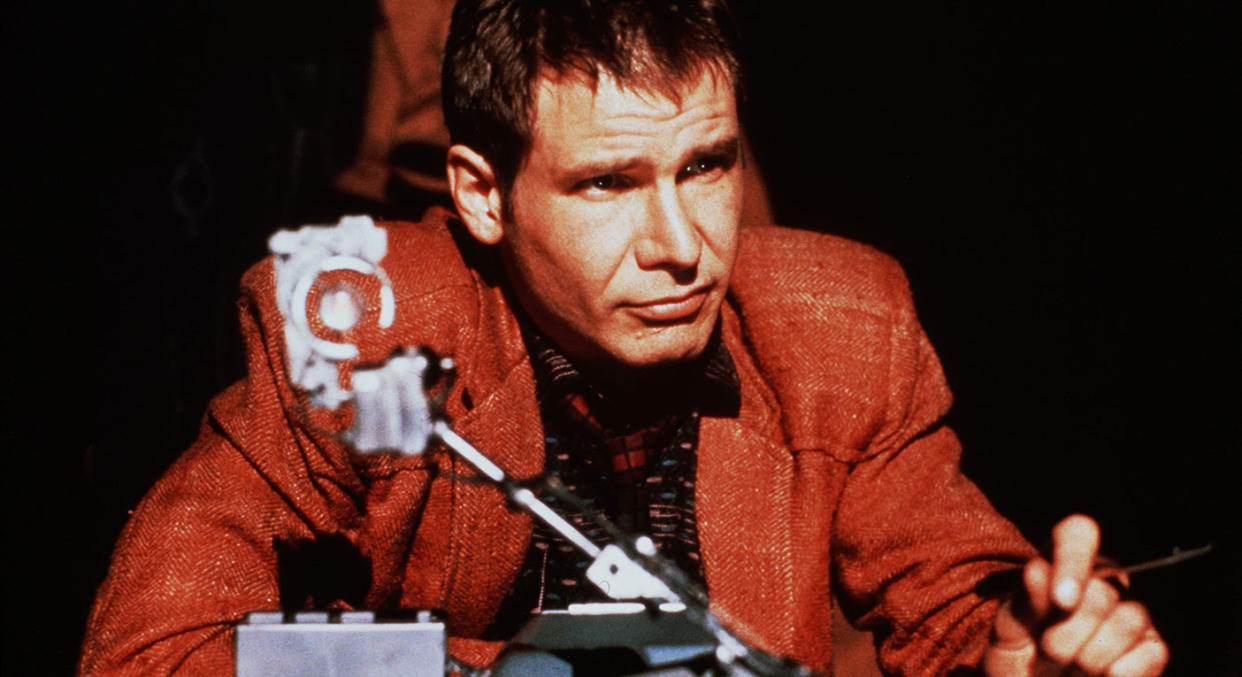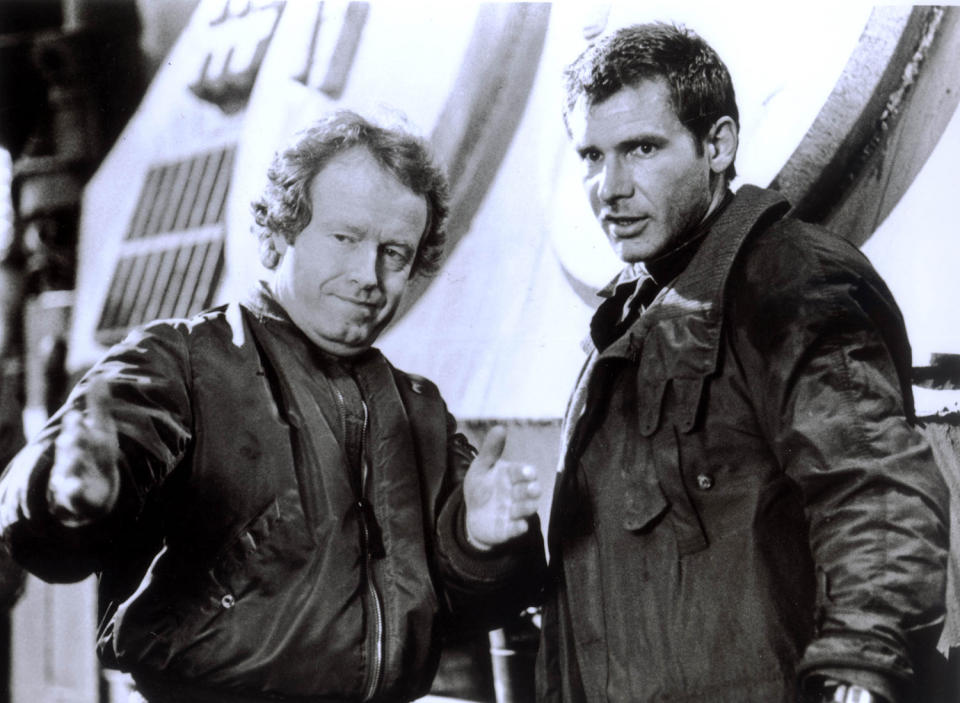How Blade Runner went from reviled to revered

“Blade Crawler,” was how one not-particularly-witty critic put it. Ridley Scott’s 1982 sci-fi opus is now rightly celebrated as being a masterpiece of the genre and a cinematic game-changer, but ‘Blade Runner’s route to cult classic was anything but straightforward.
Scott was hot off ‘Alien’ and Harrison Ford was a box-office sure thing thanks to some guy named ‘Indiana Jones’ and a little series called ‘Star Wars’, but production on ‘Blade Runner’ was still rife with troubles. Budget projections got higher and higher, investors pulled out, one day Ridley Scott was fired, then the next he wasn’t (ever the trooper, Scott never even bothered stopping shooting). It seems like barely a week went by on the set of ‘Blade Runner’ without the kind of misfortune the Hollywood gods usually bestow on Terry Gilliam.
The first cut was four hours long. Author Philip K. Dick didn’t want it to get made. But it got made. A film so ahead of its time it would take almost a decade for it to be properly appreciated – and then another few decades for its director to finally draw a line under it.
Critics were underwhelmed at the time: The New York Times’ Janet Maslin praised the movie’s strong future aesthetic but called the movie “a mess”, “tedious” and “ponderous”. The Columbia Record called it “science fiction pornography” and it was not intended as a compliment. Opinions seemed to acquiesce: ‘Blade Runner’ was pretty to look at but the slow pace was off-putting and the hyper-real world the characters inhabited was just plain weird. Oh, and the happy ending sucked.

We know better with the benefit of hindsight – that Scott’s sci-fi epic would herald in a new age of hard science-fiction – but back in 1982, expectations were not met: ‘Blade Runner’ was marketed as an action movie, and an action movie it was not. It was dismissed as a noble failure – a box-office flop, it barely made its money back. Over time though, the movie found an appreciative audience, though not necessarily a wide one at first.
A festival screening in 1990 of an early ‘director’s cut’ workprint, edited before the suits at Warner Bros made Scott add the supposedly crowd-pleasing ‘road trip’ ending, saw the public’s appetite for the film grow – not least because the narrative of ‘creativity versus commerce’ was an irresistible angle for true movie nerds. Sensing a renewed sense of optimism surrounding the film, Warner Bros put the print on wide release, but Scott wasn’t happy – he had nothing to do with it. Eventually, director and studio colluded to release the official Director’s Cut in 1992, which essentially fixed the broken parts of the movie, despite Scott still not technically having final cut.
In any case, the monotone Harrison Ford narration was removed, as was the happy ending, and ambiguous scenes that seemed to suggest that Ford’s character, Deckard, was also a replicant were added. The movie would go on to have eight distinct versions over the years. Slowly, critics began to go back on their initial hasty reactions.
Janet Maslin did a complete 180, saying: “[‘Blade Runner’] has attained benchmark status, influencing the look of subsequent movies such as ‘Mad Max’ – its indelible vision [has] passed into our image repertoire, prompting us to describe certain other futuristic visions as ‘like ‘Blade Runner’.” Richard Corliss of TIME Magazine said the film had “matured into one of the seminal artefacts and artworks of science-fiction filmmaking”.

During press for the Director’s Cut, Ford and Scott seemed to take great pleasure in publicly bashing one another all over again; the director said his actor was “a pain in the arse”, but Harrison didn’t hold back either. “’Blade Runner’ is not one of my favourite films,” he’d tell interviewers through gritted teeth; off the record, he’d later admit that he and Scott almost came to blows on set, that they loathed each other at the time, and that production on the movie was “a f**king nightmare”.
There was even a tabloid-friendly ‘curse of ‘Blade Runner”, which saw companies featured in the movie’s gigantic ads dropping like flies: Pan-Am, Atari and more all went the way of Roy Batty. All of this grist for the mill kept ‘Blade Runner’ part of the conversation: somehow, the story of the making of the movie was becoming just as interesting as the film itself.
Although initially it didn’t capture audiences’ attention in the same way as ‘Star Wars’ or ‘Indy’ (and looking back you can see just how high the deck was stacked against it), the underdog role came to suit ‘Blade Runner’ down to the ground like one of Deckard’s comfy-looking trenchcoats. It became the literal poster child for underrated movies.
2007’s home entertainment release of The Final Cut, Ridley Scott’s definitive remastering of the movie (at least until 2022’s 40th Anniverary This Time For Realsies Final Cut) cemented ‘Blade Runner’s reputation as a cult classic.
The best indicator of its eventual road to mass acceptance was how quickly a handful of tiresome critics turned on the movie again, now claiming the film was overrated where previously it was underrated. That’s when you know a film has made it. It’s not hard to trace the film’s massive influence on popular culture in the years since its release.

The movie’s cyberpunk aesthetic went on to inform the ‘biopunk’ movement, which combined technology and genetic engineering. ‘Blade Runner’ influenced other sci-fi writers; ‘Battlestar Galactica’ creators Ronald Moore and David Eick both admitted that their show wouldn’t have existed without it. Anime classic ‘Ghost in the Shell’ borrowed heavily from the designs of the film’s visualist Syd Mead and the special effects created by Douglas Trumbull, and this year we saw the cycle come full circle as the American remake of ‘Ghost In The Shell’ hit cinemas (ironically, most reviewers decried it as a ‘Blade Runner’ ripoff).
Even videogame designers fell for the movie’s aesthetic: the work of Hideo Kojima (‘Snatcher’, ‘Metal Gear Solid’) and Warren Spector (‘Syndicate’, ‘Deus Ex’) are clearly hugely influenced by ‘Blade Runner’s neo-noir vibe.
Filmmaker Denis Villeneuve counted himself as a huge fan since he was a child, and this year he got the chance to do what Ridley Scott could never commit to – expand the ‘Blade Runner’ universe with a long-overdue sequel.
Exquisitely beautiful without sacrificing what made the original so special, ‘Blade Runner 2049’ is testament to how well the 1982 original still holds up – that the two movies can sit side-to-side with 35 years in between them and still feel of the same world tells you everything you need to know about how ahead of the curve ‘Blade Runner’ really was.
‘Blade Runner 2049’ is in cinemas now. Watch a trailer below.
Read more
The best sci-fi films of the 21st century so far
Movies that had huge problems behind the scenes
Actors who hated their own films

 Yahoo Movies
Yahoo Movies 
